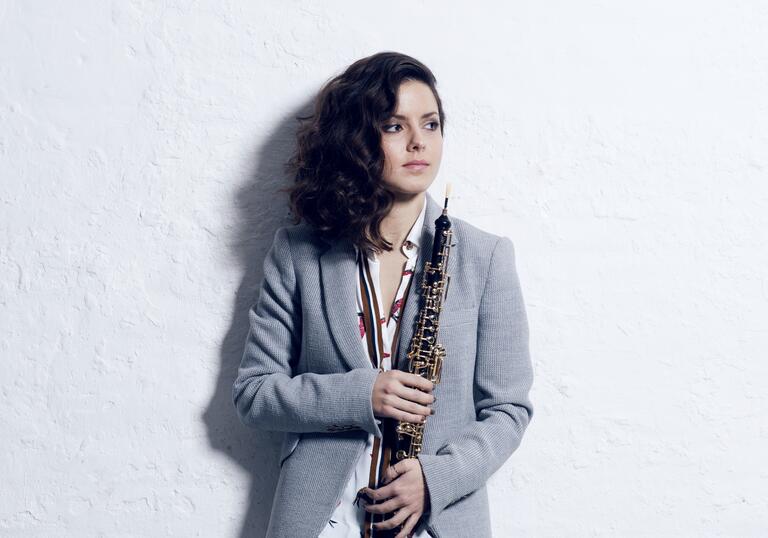The oboe is a unique instrument: challenging and lyrical, complex yet persuasive. Its voice can be strong-willed and direct, or melodic and fragile; the composer Charlotte Bray, whose music is featured in this programme, puts it well when she describes the instrument as having ‘an intense, direct sound with a melancholic edge’. It first appeared in the mid-17th century, when it was known as an ‘hautbois’ in reference to its high pitch and the wood from which it was made, then developing considerably throughout the Baroque and Classical periods, eventually culminating in the instrument we hear today in recitals and orchestras the world over. The French ‘Conservatoire-style’ oboe is the one we’re most likely to encounter these days; it was developed during the 19th. century, beating out its German style competitor, which is now considered a specialist instrument, most frequently heard in Austrian orchestras. It is said that the decision to move towards the French oboe was made in the early 20th century when the composer Richard Strauss mentioned that he preferred the Conservatoire style, changing forever the course of oboe history.
Whatever your particular preference in terms of instrument, it can’t be argued that there are some extraordinary works created and still being written for the oboe. The Romantic era French composer Camille Saint-Saëns’s Oboe Sonata in D major is one of the better-known works in the canon, and was the first of three sonatas the composer wrote for woodwind players – in a flurry of activity before his death in 1921. In a letter to his friend, the musicologist Jean Chantavoine, Saint-Saëns wrote: ‘At the moment I am concentrating my last reserves on giving rarely considered instruments the chance to be heard.’ Beginning gently and gradually increasing in speed and virtuosity, the piece has retained a freshness and at times contemporary sound more. than a century on from its creation. Charlotte Bray’s new commission This other Eden mirrors and extends Saint-Saëns’s three movements, creating a political world that reflects Bray’s feelings on Brexit. Bray began to write the piece ‘as the deadline for leaving the EU was approaching’ and felt ‘compelled to explore [it] musically’. Over the course of the three movements, oboe and piano are in turn defiant and resistant, yearning then fragile, unsure. Finally, the third movement becomes dissonant, asking questions, presenting statements, yet never quite finding an answer. The music, Bray explains, reflects ‘the dissonant discourse of a nation … the music is left hanging, high in the air…’.
Ravel, with his unerring ability to spin delicate colours and magical sonorities, may provide some solace after the unanswered question left hanging by Bray. The Sonatine, for solo piano, originally came into being as an entry into a competition run by the Weekly Critical Review for the ‘first movement of a piano sonatina no longer than 75 bars.’ He wrote very little about the piece, mentioning in his autobiography only that he’d ‘composed a Sonatine’ after he finished Miroirs. Stylistically, there are nods to the Neo-classical, with passages, particularly in the second movement, that do not overburden the pianist, but nor does Ravel shy away from the fast and flashy: the final movement is fanfare-like and modern.
Like the Ravel, Mozart’s Trio in E flat major, the Kegelsttat, ranges between joyful and contemplative. The work is cast in three movements, and the composer broke new ground by creating the first piece for clarinet, viola and piano, one that is deftly rearranged for oboe here. The ‘Kegelsttat’ of the title refers to ‘a place where skittles are played’, or a bowling alley, a nickname given to this work perhaps mistakenly; Mozart inscribed a different piece written a week and a half earlier with the note ‘untern Kegelscheiben’, or ‘when playing skittles’. This trio landed the moniker in 1862 in a catalogue, which, for better or worse, stuck. The work itself is musically egalitarian, allowing each instrument equal space to shine. Written for Mozart’s friends and students, it plays out as a conversation between equals – delightful, with a singing quality, and then, despite momentary melodic darkness, a jubilant end.
Finally, Robert Kahn’s Serenade in F minor soars into focus – a piece originally intended for oboe, horn and piano but eventually changed, then changed again when a savvy publisher told the composer it would never sell in its original configuration. That publisher refused to print the piece unless Kahn rearranged it for a regular piano trio, and not one to be easily defeated, he did what was asked, but also arranged the work seven more times for different chamber formations. Kahn was an occasional student of Brahms, and his focus was predominantly on chamber music: over his lifetime he wrote prolifically for some of the leading performers of the early 20th century. This Serenade is in one movement with two contrasting parts, by turns moving and sparkling.
© Megan Steller

